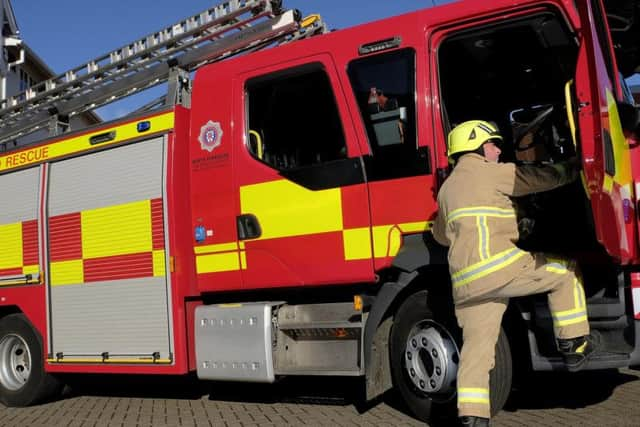Scaling back of rural Yorkshire fire stations blamed for rise in response times to serious blazes
Yorkshire union officials said the rise in less-populated areas was often due to rural stations being scaled back, or crew numbers reducing, meaning back up from further away had to be called in.
Nationally, Home Office figures showed the average response time to the most serious category of fires is more than half a minute longer than five years ago, at eight minutes and 49 seconds.
Advertisement
Hide AdAdvertisement
Hide AdThis represents an increase of 11 seconds since 2017/18 and of 33 seconds since 2013/14.


Rural areas saw some of the largest increases in services’ response times to primary fires on previous years.
An average response time of 10 minutes and 34 seconds in predominantly rural areas in 2018/19 was up 18 seconds on 2017/18 and 27 seconds on 2013/14.
Significantly rural areas had an average response time of nine minutes and 59 seconds in 2018/19, which was 13 seconds longer than 2017/18 and 52 seconds more than 2013/14.
Advertisement
Hide AdAdvertisement
Hide AdMeanwhile, fire and rescue services in predominantly urban areas had an average total response time of seven minutes and 41 seconds to primary fires in 2018/19.
Neil Carbutt, Secretary of the Fire Brigade Union (FBU) in South Yorkshire, said: “Rural response times have increased but that’s because we’ve been through a period of austerity and shutting stations.”
He said: “Sometimes the rural stations might get some of the same amount of calls as the urban ones. For instance in South Yorkshire there’s a station in Thorne and the next nearest station is in Goole, then Doncaster, which is 14 or 15 minutes away on blue lights.”
But he said because of the minimum number of firefighters needed for a house fire being nine, and crews being made up of five firefighters, a fire close to Thorne would need back up from Goole or maybe Doncaster if they were already busy.
Advertisement
Hide AdAdvertisement
Hide AdHe said this was critically important when the FBU fought attempts to take crew sizes down to four last year.
If this had happened, three crews would have been needed for a house fire, potentially from further away.
He said: “And that kind of thing affects response times. Where we were successful last year is we made the case crucially around Thorne.”
He said it could have been the case that two four-person crews turned up at a rural fire but could not start tackling the blaze because they were one-person short of the required number.
Advertisement
Hide AdAdvertisement
Hide AdHe said “morally” his colleagues would naturally start but it “put them in a horrible position”.
Martyn Bairstow, Secretary at West Yorkshire FBU, echoed his concerns and said West Yorkshire Fire and Rescue had tried to alleviate this by recently suggesting a senior firefighter arrived in a car, allowing them to reach a total of nine firefighters.
A spokesman for West Yorkshire Fire and Rescue Service said: “We at all times reactively manage our fire cover and make appropriate moves so engines are available in all areas.”
They added that if an incident was not life-threatening, their response did not need to be as urgent, and ensured their crews drove safely.
Advertisement
Hide AdAdvertisement
Hide AdChief Fire Officer at North Yorkshire Fire and Rescue Andrew Brodie said: “Many of our stations are on-call fire stations, with firefighters responding into the station from home or work to attend incidents. But, the public can be reassured that we always attend every incident as quickly as we can and can take immediate action to help resolve the situation.”
South Yorkshire Fire and Rescue Service was contacted for comment.
Releasing its latest figures, the Home Office said total response times had increased gradually over the past 20 years.
Figures had “generally plateaued” since 2014/15, followed by a “marked increase” in 2018/19. The Home Office said the increase in the total response time to primary fires was “entirely caused by the increase in average drive time”.
Advertisement
Hide AdAdvertisement
Hide AdFBU General Secretary Matt Wrack said: “Services have been cut to the bone, and it’s obvious that with fewer firefighters and scarcer resources, firefighters are taking longer to get to fires, putting lives and businesses at risk.”